
 Back in 2012, I went to the West Coast Jewish Theatre (FB)’s production of “New Jerusalem: The Interrogation of Baruch Spinoza“. At that time, I learned that their next production was to be the musical version of Mark Harelick (FB)’s play “The Immigrant“. I obtained a copy of the CD, and started to try to fit it into my theatre schedule — but, alas, I couldn’t. This year, when planning my trip to the Bay Area to visit my daughter (who is in her third year at UC Berkeley, and her second year of Yiddish studies), I discovered that Tabard Theatre Company (FB) was doing the original play during my visit. I quickly made arrangements to attend — which we did yesterday, seeing the penultimate performance of the play. I am extremely glad that we did — this was a very very moving play; I play I want to see again when it revisits Southern California. I’d recommend you go see it, but it closed last night.
Back in 2012, I went to the West Coast Jewish Theatre (FB)’s production of “New Jerusalem: The Interrogation of Baruch Spinoza“. At that time, I learned that their next production was to be the musical version of Mark Harelick (FB)’s play “The Immigrant“. I obtained a copy of the CD, and started to try to fit it into my theatre schedule — but, alas, I couldn’t. This year, when planning my trip to the Bay Area to visit my daughter (who is in her third year at UC Berkeley, and her second year of Yiddish studies), I discovered that Tabard Theatre Company (FB) was doing the original play during my visit. I quickly made arrangements to attend — which we did yesterday, seeing the penultimate performance of the play. I am extremely glad that we did — this was a very very moving play; I play I want to see again when it revisits Southern California. I’d recommend you go see it, but it closed last night.
One thing common to all Americans is the immigrant experience. For some, it is so far back there is no memory (native Americans). Others try to forgot those times (“I came over on the Mayflower”). In the Jewish community, most know their immigration story. For example, I know how my grandfather came to American from Vitebsk, entering at the Port of San Francisco and going to New York. I know that other branches of my family came from Germany to New York, and then to Nashville. These are experiences that shape a family.
“The Immigrant” tells one such story — and one that is true. It tells the story of the Harelick family (yes, the author of the play), whose patriarch (Haskell Garelick, changed to Haskell Harelick) immigrated from Russia in the early 1900s to Galveston TX, and thence to a small community on the Texas plains called Harrison. Starting life with a pushcart selling bananas, he befriends the town banker (Milton Perry) and his Southern Baptist wife (Ima Perry), coming to live with them. Perry helps Harelick move from a pushcart selling bananas to a horse-drawn cart selling fruits and vegetables to a dry-good store. Harelick saves money to bring his wife (Leah in the play; Marleh in real life) over from Russia. The family thrives and grows with the addition of three sons. A friendship grows between Leah and Ima, and Haskell and Milton become estranged. Near the end of Milton’s life, they reconcile. The family goes through WWII, with Milton eventually dieing in 1987 at the age of 100.
This is the story of the play. The first act is centered in 1909 and 1910, and focuses primarily on Haskell’s arrival, his befriending of Milton, and the initial growth of the business and the bringing over of his wife. At least 60% of the first act is in Yiddish. The second act provides the rest of the story very fast in little vignettes: the budding friendship between Leah and Ima, the birth of each child, a Sabbath dinner, the reconciliation, and a epilogue that finishes the story. All the while, projected around the actors between scenes, are pictures of the real Harelik family that correspond to the times being presented.
The overall picture presented is a very touching one — and a very American one — that shows the impact of the immigrant on a community, and the values that an immigrant can bring to a community. It shows how a community can fear the outsider. It also highlights (in the WWII scenes) how America’s attitude has changed — the country used to welcome the immigrant; now it fears the immigrant (witness the recent situation in Washington DC).
This play also brought to mind two other plays that I have seen recently. The first (and most recent) was “Handle with Care” at the Colony. That play was also a fish out of water situation. In the play, Ayelet can speak very little English, and is speaking rapid fire Hebrew to the audience. The audience (well, most of the audience) likely cannot understand the words, yet quickly understands the meaning. Similarly, in The Immigrant, the audience (well, most of the audience) does not understand the Yiddish that Haskell is speaking, but they get what he is saying. The other play this evoked was “Bat Boy: The Musical“. That play also explores how strangers are received, but with a much more tragic end. All of these plays make us realize that we can see the stranger in our community with fear, or we can get to know them and learn that they are good people.
A final observation on the story itself: As I said at the beginning, I was more familiar with the musical. As I watched the play, I could easily see the places where they musicalized the story, and why the story cried out for the musicalization. I look forward to the day when I can see the musical version.
I really only had one minor quibble with the story: In the Sabbath scene, after Leah lights the candles alone and they do the blessing over the children, they indicate they are doing the blessing over the wine… and then proceed to recite the blessing over the candles (which should be said as you light them). They then do the (short) blessing over the wine. This is probably something only I would catch.
Let’s now look at the performance in this piece, which was under the direction of Karen Altree Piemme (FB), who clearly worked closely with these actors to draw out extremely moving performances.
The Harelick family was portrayed by Steve Shapiro (FB) as Haskell, and Erin Ashe (FB) as Leah. Shapiro was remarkable in the role, handling the language and dialect with aplumb (at least to my untrained ear, and I didn’t hear any complaints from my daughter). Shapiro just seemed to become Harelick, inhabiting the character and bringing him to life seamlessly. Ashe’s Leah had a touching vulnerability about her throughout the story; you could see it slowly turning to strength as she lived longer in America. Together, the two had a great chemistry and were a believable couple.
The Perry family was portrayed by Donald W. Sturch (FB) as Milton and Diane Milo as Ima [note that Denee Lewis/FB was Ima for all but our performance day]. Sturch was very good as Milton, portraying both a gruff and a tender side. He was particularly good near the end of the play as the aged, and obviously overcome by stroke, Milton. Milo was also very good as Ima (especially considering that this was her only performance day), showing a character that was initially unsure about the stranger but clearly warming up to the family… especially seeing them more as kindred souls than her husband did.
Overall, the four performances combined with the story to create a truly moving portray. Just excellent. I’ll note you you can find the full program, with all actor credits, here.
Turning to the technical and physical side. First I should note that the Tabard facility is a beautiful one — comfortable chairs and a few tables wrapping around a thrust stage, with a full bar in the back. The scenic artist (Migi Oey (FB)) turned this stage, with just a few props (a door here, a table there, some steps over there) into distinct scenic locales; this combined with Ruth E. Stein (FB)’s very realistic properties very well (they must go through a lot of fruit and veggies each show). Also supporting the overall scenic design were the costumes of Marilyn Watts. The sound design by Robert Lewis had some microphone problems in the beginning, but in general worked well. This was similarly true for the lighting design of Rover Spotts (what a name for a lighting designer): the use of LED lighting and Leikos combined well to evoke mood, although the sudden shift to red in the one fight scene was a bit heavy handed. Technical direction (and presumably, the projections) was by Joe Cassetta, assisted by John Palmer. These worked extremely well to establish the mood and provide the historical context. Kiana Jackson was the stage manager. “The Immigrant” was produced by Cathy Spielberger Cassetta (who I believe was the one that was so kind to let me take a program home; normally, they leave them for the next performance and email the link to the program to the attendees).
Alas, “The Immigrant” at Tabard is no more. The final performance was last night. That’s too bad. However, if that show is indicative of this theatre’s work, I encourage those in the area to see their future shows. I know that if I lived in the area, I would be particularly interested in the musical “Violet“, running April 10 through May 3. Alas, whereas I’ll drive from Northridge to the Anaheim Hills for “She Loves Me” (about 67 miles); driving from Northridge to San Jose (326 miles) is a bit much. Then again, it might be an excuse to spend time with my daughter :-).
[Ob. Disclaimer: I am not a trained theatre critic; I am, however, a regular theatre audience. I’ve been attending live theatre in Los Angeles since 1972; I’ve been writing up my thoughts on theatre (and the shows I see) since 2004. I do not have theatre training (I’m a computer security specialist), but have learned a lot about theatre over my many years of attending theatre and talking to talented professionals. I pay for all my tickets unless otherwise noted. I believe in telling you about the shows I see to help you form your opinion; it is up to you to determine the weight you give my writeups.]
Theatre continues today with the Dickens Fair (FB) in Daly City. After I return, it is “Kinky Boots” at the Pantages (FB) on Sat 11/29. As for December, I just ticketed “She Loves Me” at Chance Theatre (FB) in Anaheim on 12/20, and we’ll probably go see “Joseph and His Amazing Technicolor Dreamcoat” at Nobel Middle School just before ACSAC. Right now, there is only one show booked for January 2015 – “An Evening with Groucho” at AJU with Frank Ferrente; additionally we’ll likely have the first show of the REP East (FB) season: “Avenue Q“. As always, I’m keeping my eyes open for interesting productions mentioned on sites such as Bitter-Lemons, and Musicals in LA, as well as productions I see on Goldstar, LA Stage Tix, Plays411.



 Here’s an adage to live your life by:
Here’s an adage to live your life by:
 As an author, you hope that your literary creations live on after you; if this occurs, your memory stays alive long after the body is gone. When we think of Oz, we think of L. Frank Baum (even if, as is the case for Wicked, the real author is Gregory Maguire). When we think of
As an author, you hope that your literary creations live on after you; if this occurs, your memory stays alive long after the body is gone. When we think of Oz, we think of L. Frank Baum (even if, as is the case for Wicked, the real author is Gregory Maguire). When we think of 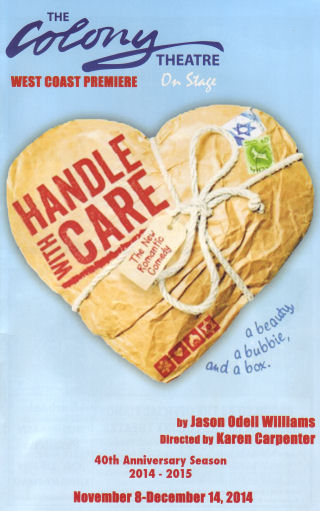
 Normally, when I write up shows I’ve seen at the
Normally, when I write up shows I’ve seen at the 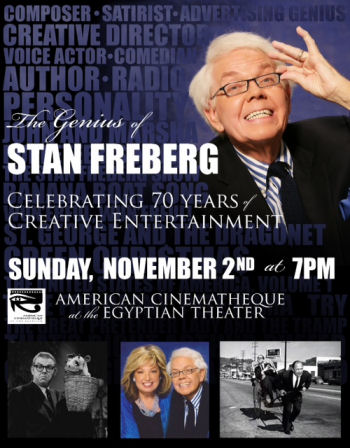
 If you’ve been reading this blog for any amount of time (well, since before
If you’ve been reading this blog for any amount of time (well, since before 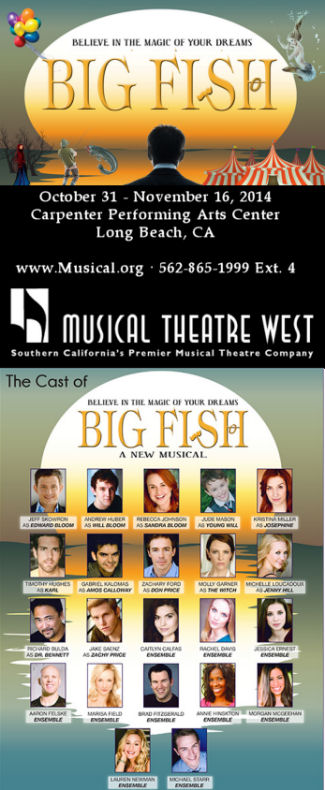
 As you know by now, I love filling my iPod. So when new musicals by composers that I like (in this case,
As you know by now, I love filling my iPod. So when new musicals by composers that I like (in this case, 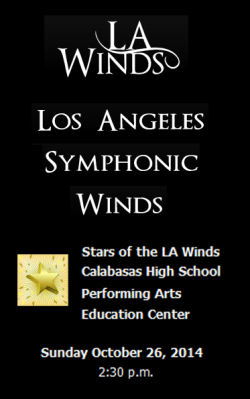
 If you recall from
If you recall from 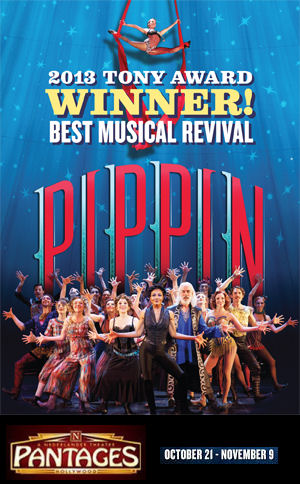
 “Pippin” has one of my favorite scores — I love all the music on the original 1972 cast album, and I’ve seen the show twice in Los Angeles: once in
“Pippin” has one of my favorite scores — I love all the music on the original 1972 cast album, and I’ve seen the show twice in Los Angeles: once in